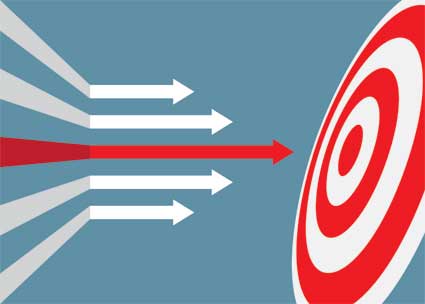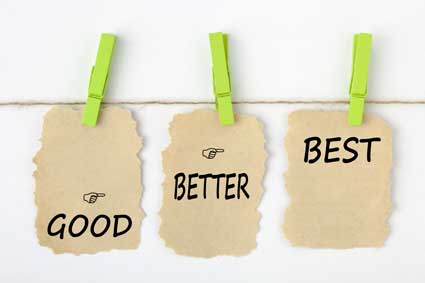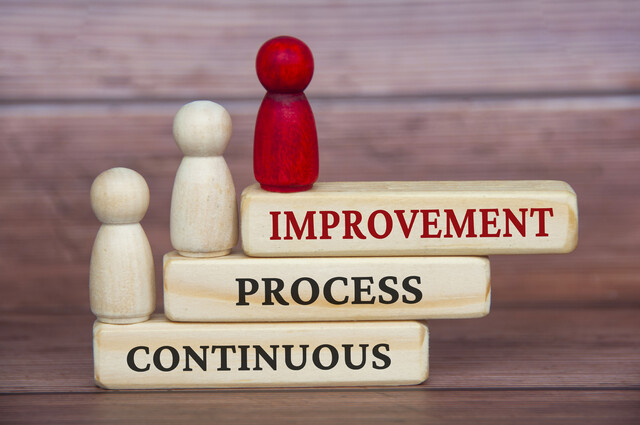There are numerous factors and schools of thought that can affect a business' operations, both negatively and positively. The right combination, with the proper execution, can all but guarantee the long-term success of a business. Often these aspects are determined by the experts who study them and search for patterns that indicate their value throughout history. For many business owners and managers, such information from these studies can be incredibly vital.
One of the more important and significant aspects that can affect a business is organizational behavior. Its presence in the professional world is historically well established, although many people are not necessarily aware of it and its impact on work. A well-formed organizational behavior model carries with it a degree of flexibility that allows it to be implemented regardless of the situation or environment, or the size of the organization that it is present in. As a result, it can be a valuable tool for any kind of organization, business or otherwise.
This article is intended to provide an introduction to the topic of organizational behavior. Again, it's not a topic or concept that you may be familiar with or even aware of professionally.
As stated, organizational behavior has a long-term relationship with the business world, but what is it exactly? One definition describes it as the attitudes and actions of those within an organization towards each other and the organization itself, and how those behaviors affect it.1 In many cases, organizational behavior is best studied and applied with groups of people in an organization-think along the lines of how co-workers and team members interact at work. If the behavior among the members of the group is antagonistic or conflicting, it can bring down the productivity of the group and the quality of whatever it is they are working on. Likewise, when the behavior of the group is cooperative and cohesive, the outcomes are significantly beneficial for those involved.
Organizational behavior is not universal so there are several different types and models that businesses can use or have. This is typically determined by your business model and the philosophies the business is based upon.2 However it does commonly present itself through the following:
- Ethics-Ethics in any organization is a fairly important aspect in general, but it can strongly influence the business' overall organizational behavior. Each person will come into a business with their code of ethics that they personally follow and it can interact-positively or negatively-with the business' own established ethical code. Clashing ethics can prove problematic for the other elements of the business and can skew the balance necessary for the business' organizational behavior to be successful. Ethics can be a tricky element for the business' leader(s) and management to deal with on their own and the concept of organizational behavior can provide some much needed assistance to keep things in check. It also tends to make it harder for lapses in the ethical code to slip past scrutiny and generate problems for the business later on.
- Management-Almost every part of a business can be traced back to its managerial level and the staff that control it. They often set the tone throughout the business, which can include its organizational behavior practices. Different types of management practices can in turn generate different types of organizational behavior and will undoubtedly affect the business' policies.3 For many businesses, the role that management plays in organizational behavior can be the most substantial. They are often the ones who actively monitor the business' organizational behavior and look for any changes that may signify that there is a problem. They may also be responsible for issues that develop, as the underlying cause of an organizational behavior problem can be traced back decisions previously made by management.
- Harassment-The combination of harassment and the workplace is never something that is seen in a positive light. Its presence often has a negative effect on the business' organizational behavior beyond just the victim and perpetrator of the harassment.4 Harassment often generates an atmosphere in the workplace that can be interpreted as hostile to those trying to work there. Those who are not directly affected can be indirectly affected if they witness the harassment or interact with those involved. Such conditions may disturb the harmony in the work environment and make it difficult for the business' organizational behavior to remain in functioning form. It is cases of harassment in the workplace that show how easily the harmonious balance attached to a business' organizational behavior can be displaced and cause problems to arise.
- Accountability-Accountability is best viewed as a person or organization taking responsibility for their actions and decisions, and anything caused by those.5 The ability to do so often depends on how much control you have over a situation or your work, but it is generally possible. Active accountability can help a business continue to function effectively and maintain a healthy organizational behavior model, even in cases of mistakes and failures. It keeps things running and prevents the business from wasting time-and, often, resources-trying to find the responsible party behind a failure or success. In some cases, those who are held accountable for their positive actions may be rewarded for their efforts by the business, which can serve as a motivator for continued productivity.
- Decision Making-In order for anything to get done, decisions must be made. The situation and environment in which the person is in when the need to make a necessary decision arises can impact what they choose to do or not do. As those factors are often a part of the business' organizational behavior to some degree, it's safe to say that other elements of organizational behavior shape such instances. If those elements are well-balanced and the organizational behavior is in a healthy state, employees within the business are going to be more informed and comfortable with their decision making.6 If those conditions are lacking, then it's entirely possible that the person's decision can be biased towards their own opinions or based upon missing or incorrect information. In business, decisions are an integral part of the day-to-day operations and often are linked to one another in a series. A single decision, even a small one, can affect another decision further down the line and trigger a chain reaction if the reasoning behind it was not in the best interest of the company.
Why Is It Important for Businesses?
As the above would suggest, organizational behavior does carry a lot of importance for businesses. It is intertwined with so much of a business-its environment, its functionality, its structure, and its culture, to name a few-that it's no wonder that business leaders do their best to pay attention to it. As a resource, it can be especially valuable as it can help predict changes in behavior and actions within the company.7 For those who have an administrative role in the business, organizational behavior can make a world of a difference by allowing you to get ahead of an issue before it wreaks havoc on your bottom line. That additional insight can be quite the advantage for productivity and for keeping things running smoothly.
Implementing and monitoring organizational behavior in a business isn't just about boosting your business' operations. In many cases, organizational behavior can bring about several benefits if it is used wisely. Some benefits can include:
- Control Over Influences-Every factor that can impact a business both negatively and positively, depending on how, when, and where it is presented in context to the daily operations. To add to things, most of these influences are outside the control of the business and its staff. Anything that can curb the flow of these influences and their effects is typically beneficial to an organization because it puts some degree of control into the hands of the business itself.8 Organizational behavior sets the ground rules of how different influences are able to interact within the business. It also allows managerial staff to identify what influences are coming in and where they're originating from. Recognizing some of these influences for what they are isn't really possible if no one is paying attention to them in the first place. Once a business knows about the things that affects it, they can take measures to prevent or deter harmful influences from getting in. Likewise, they can do what they can to attract beneficial influences when and where they are needed.
- Provide Uniformity and Structure-While employers and business owners do want to encourage diversity and individuality amongst their employees, some degree of uniformity is necessary for success. Organizational behavior often allows the structural parameters that the business operates under to be established and maintained. Even the most diverse group cannot properly function together if there isn't a level base for them to work upon. Without that necessarily dosage of structural uniformity, it can be very easy for things to descend into chaos and for nothing to be accomplished. There's almost a balancing act that keeps all of a business' elements properly in place; skew the balance and one element can overshadow the others. While this may be good in small dosages for particular aspects, it can cause instability. Well established and healthy organizational behavior provides a framework for all individual employees to work off of and a sense of order for the business. It's also far easier for a business or organization to grow once they have a solid foundation in place for them to build off of.
- Motivation and Morale-Organizational behavior allows for a business' leaders and management to better address what drives their employees and provide motivation for them.9 When employees have a reason for doing their work other than a paycheck, they often will put more effort and care into the task. This can improve the quality of the final product and improve the overall morale of the staff to create a better working environment. Businesses taking care of and treating employees well is built into organizational behavior and can help maintain the order that the concept provides. Studies have suggested that employees who are treated better by their employers are not only happier and less likely to become ill or be adversely affected by excess stress, but they will also follow the business' rules better and will be less inclined to lash out at management.10 The conditions of the work environment are significantly better and the interactions amongst all members of the staff are much friendlier. Better conditions mean the employees will be happier, and happy employees often result in a more productive business.
- Improved Communications-Communication is key for any organization to run efficiently. Those on all levels in the business need to know what's going on if they are going to be able to accomplish a task together as a group. Simple miscommunications or the wrong information can cause production delays, accidents, or even impact the quality of the product the business is putting out. If the members of a team are told the different times and/or the wrong place that they are supposed to meet up to work on a work assignment, then the time wasted on getting everyone back on track or waiting for people to show could have been used for actual work. The framework that organizational behavior provides, as mentioned previously, typically determines how information flows from person to person within the business. Business leaders that have established organizational behavior often are actively monitoring its effect on their company and can likewise monitor the flow of communication. Comparisons between the flow before and after organizational behavior was present typically show improvement. It also makes it far easier for those leaders to catch communication issues before they become too much of a problem.

























